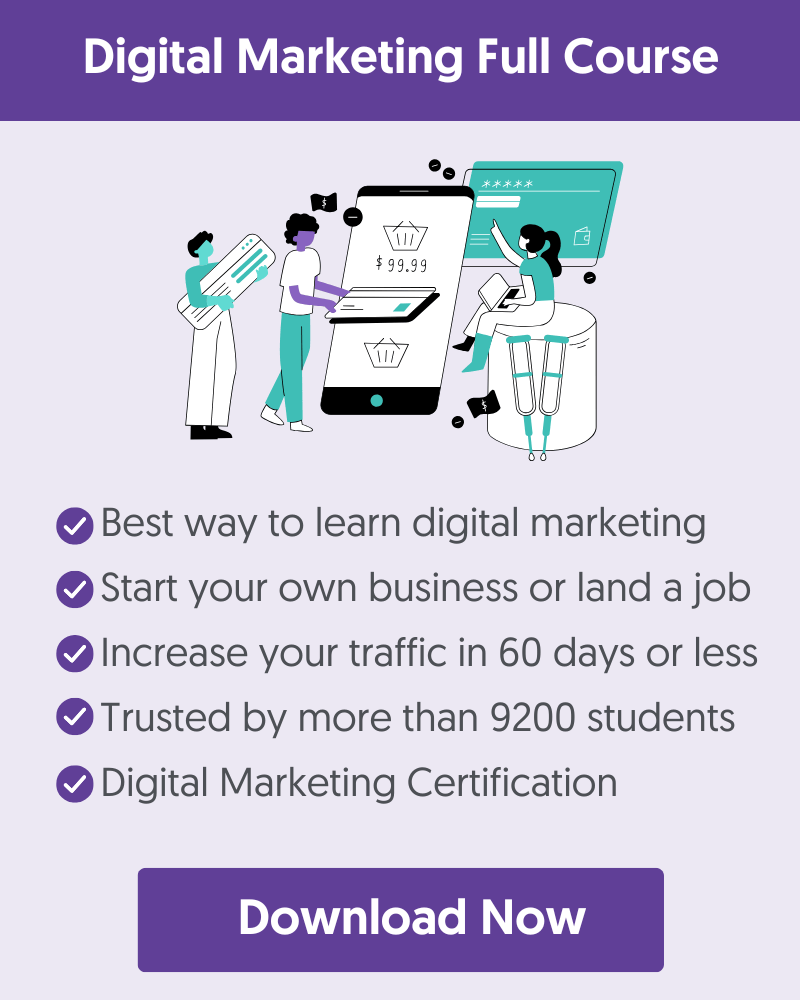B2B content marketing isn’t just about filling a blog with industry insights—it’s a strategic approach to building trust, demonstrating expertise, and guiding decision-makers through a complex buying journey. Unlike B2C consumers, B2B buyers don’t make impulse purchases. They conduct extensive research, compare options, and rely on high-value content to inform their decisions.
The right content, from thought leadership articles to data-driven reports, positions your brand as a trusted authority in your industry.
In this guide, you’ll discover how to craft a B2B content marketing strategy that engages your audience and drives meaningful business results.
What Is B2B Content Marketing?
B2B content marketing is the practice of creating and distributing valuable, relevant content to attract, engage, and convert business buyers. It focuses on educating decision-makers, addressing their pain points, and guiding them through the often complex B2B buying journey.
Unlike B2C marketing, which targets individual consumers, B2B content speaks to businesses and requires a more strategic, data-driven approach. Content formats such as whitepapers, case studies, industry reports, webinars, and thought leadership articles help establish trust, showcase expertise, and support long sales cycles.
While B2B content marketing differs in tone and intent from B2C, it still leverages multiple channels—including social media, email, and SEO—to maximize reach and impact. The ultimate goal is to provide value that influences purchasing decisions and builds long-term customer relationships.
Differences Between B2B And B2C Content Marketing
Although both B2B and B2C content marketing focus on creating engaging, valuable content, they have some crucial differences.

Target Audience: The most significant difference is in the target audience you want to reach and the type of content you use to connect with that audience.
Where B2C content addresses the needs, interests, and challenges of individual consumers making purchases for themselves, B2B content connects with the needs of professionals making purchases on behalf of an organization.
Because your audience focus is different with B2B marketing, your content will differ too. For instance, B2B content marketing generally targets high CPC low-volume keywords for SEO, while B2C content marketing addresses broader, high-volume keywords.

Audience Goals: In B2B content marketing, your audience will be focused on finding resources to help increase their ROI, efficiency, and expertise. B2C consumers are more focused on money-saving deals and entertainment.
Purchase Motivation: Most B2B customers are driven by financial incentives and logic, whereas B2C consumers are influenced by more emotional factors.
B2B consumers want to be educated and informed to make intelligent purchasing decisions. They’re looking for tactical and practical content. B2C consumers are more interested in entertainment, which means content styles are more likely to be emotionally driven and fun.
Decision Process: Customers in the B2C market rarely need to confer with others to make a decision. However, in the B2B landscape, numerous people are involved in the purchasing process.
Purchasing Behavior: Customers aren’t necessarily searching for long-term relationships and solutions in the B2C sector. However, in the B2B environment, buyers invest in solutions, leading to longer sales cycles, contracts, and relationships with other companies.
Content Distribution Channels: In the B2C market, social media is often a key channel for content distribution. In the B2B market, some companies use specific channels (like Facebook, Instagram, and LinkedIn), but website content and email campaigns are more common.
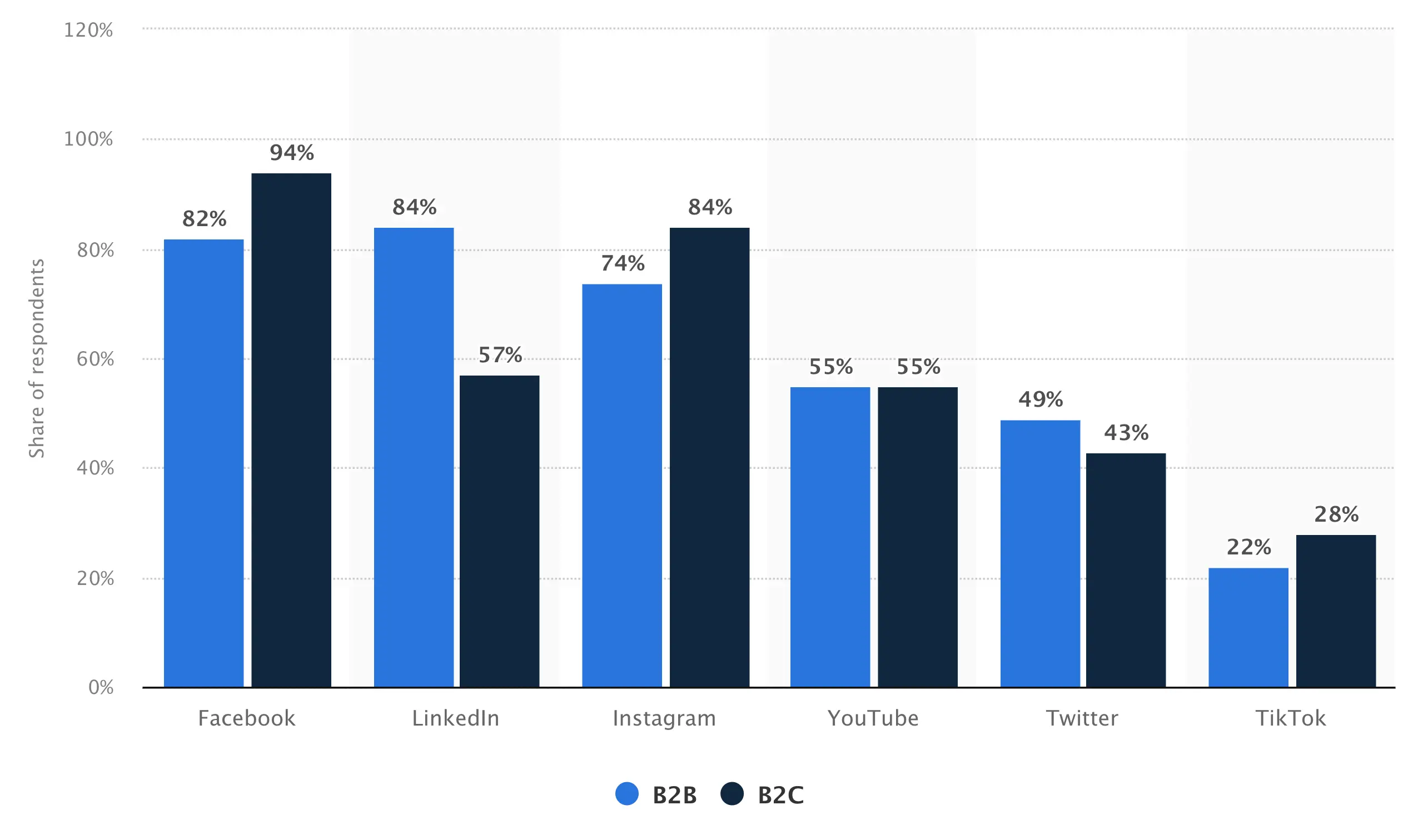
Benefits of Content Marketing For B2B Businesses
Investing in content marketing can generate many benefits for B2B businesses. The most important are:
- Improved search rankings: Search engine-optimized content focused on high-value commercial keywords helps elevate your website's search rankings. This leads to increased traffic on your website and more potential leads.
- Enhanced brand awareness: Content provides B2B companies with an opportunity to share insights into their products, solutions, and brands. You can generate social media shares and boost brand awareness.
- Better brand reputation: Through insightful thought leadership content, B2B companies can establish themselves as an industry authority. This leads to increased conversion rates and improved brand differentiation.
- Trust and relationships: Since sales cycles last longer in the B2B world, it’s important to establish strong relationships with buyers. Content helps to showcase your credibility and power customer success.
- Customer education: B2B solutions can be more complex to understand than B2C products and services. Content marketing offers an opportunity to educate your customers about your offering.
How To Create A B2B Content Marketing Strategy
- Understand Your Target Audience
- Define Your B2B Content Strategy
- Connect With Decision Makers
- Create Content For All Stages of the Marketing Funnel
- Perform Industry Studies
- Aim To Rank For Commercial Keywords
- Explore Various Content Formats
- Use Paid Ads to Reach The Right Audience
- Use Email Marketing To Keep Your Audience Engaged
- Build Niche Authority
1. Understand Your Target Audience
The biggest determinant of effective B2B content marketing is how well you understand your target audience or buyer persona.
In B2B content marketing, your target audience may encompass entire groups of decision-makers. For instance, a commercial banking company might target financial directors, CEOs, and other executive suite members.
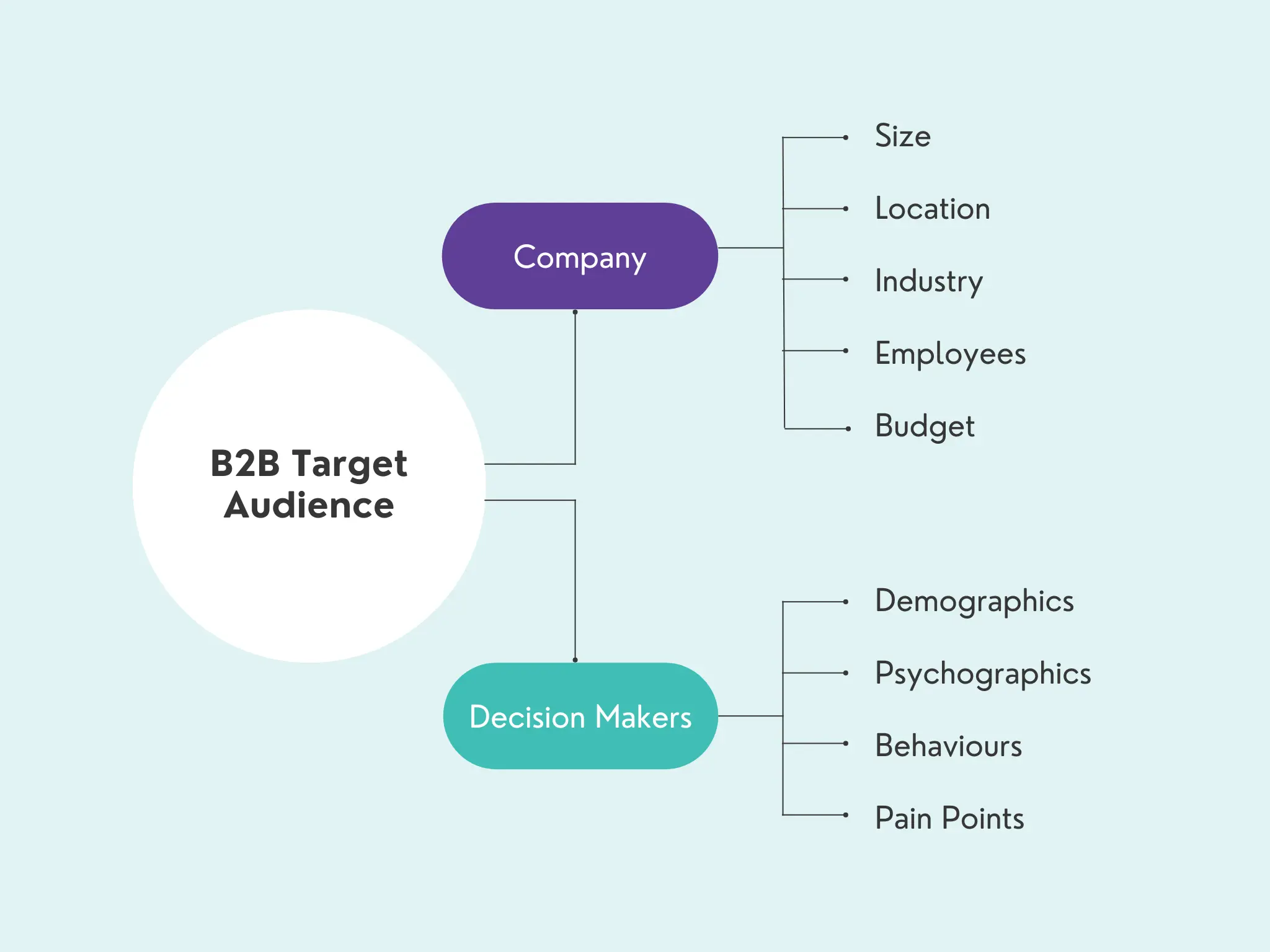
Only by understanding your target audience can you create content that speaks to their challenges and goals. Start by identifying the “firmographic data” of your ideal customer. In other words, define the ideal:
- Company size (small, medium, enterprise)
- Company location (the region you serve)
- Industry or niche, such as healthcare or fintech
- Number of employees
- Revenue or available budget
Then, assess the demographic and psychographic elements of your ideal consumer. For instance, do you target CEOs of a specific age or education level? What job title would your ideal customer have, and what are their goals, values, pain points, and beliefs?
This information will help you build specific customer profiles and buyer personas, which will help you determine how your customers make purchasing decisions and which channels they use to consume content.
You can collect useful insights by doing market research (surveying your customers) and assessing the customer profiles or competing customers.
2. Define Your B2B Content Strategy
Once you have a clear view of your target audience, the next step is to establish a clear strategy for your B2B content.
A good way to get started is to examine the “marketing mix” or the “4 P’s” of marketing. In other words, what product do you sell, what’s the price, where do you sell it, and where will customers find out about your product?
Once you’ve established your marketing mix, you can create a marketing plan and strategy. A marketing strategy looks at your company’s goals, the conditions of the current market, and the methodologies you might use to connect with consumers.
A marketing plan provides an actionable roadmap, covering points like:
- Marketing goals: What do you want to accomplish with your marketing campaigns? Which channels will you use to raise awareness, earn website traffic, increase conversions, or improve audience retention?
- Key roles: Who will be responsible for each stage of your marketing strategy? Which employees will create content or promote it? Who will you work with to create graphics, design web pages, or edit and proofread your content?
- Content options: What type of content will you create? Are you focusing on blog posts and infographics, videos or podcasts, social media posts, and email campaigns? How often will you create new content, and how will you ensure it’s properly distributed through the correct channels?
Ensure you have a clear plan for assessing and monitoring your campaigns' performance.
Before you begin your campaign, define clear metrics and KPIs, such as website traffic or audience engagement metrics.
It’s also worth making sure you have the right resources, such as editorial guidelines and brand documents, available to employees to guide content creation.
3. Connect With Decision Makers
One important thing to remember when producing a B2B content marketing plan is you’re not just trying to capture the attention of anyone in a business.
You need to connect with decision-makers – the people capable of making purchasing choices.
Your audience research and buyer personas will help you to identify who the key decision markers are in your target market.
Using this information, consider which channels you’ll be able to use to reach crucial buyers, such as:
LinkedIn: According to studies, most marketers use LinkedIn to reach high-level employees in B2B businesses. Optimizing your LinkedIn profile for certain commercial keywords, joining industry groups, and reaching out to leading team members will help you connect with the right decision-makers through social media.

Email: Email is still one of the most effective ways to connect with B2B decision-makers. Creating personalized outreach strategies where you reference a company’s goals, pain points, and the core benefits of your solutions will help you strengthen your chances of conversions. Avoid generic “cold emails”.
Events: Events are a fantastic environment for B2B marketing. Many B2B consumers still prefer to connect with salespeople face-to-face. Attending industry expos, conferences, and online events will help you find consumers ready to purchase and learn about your service.
If you’re unsure where to connect with decision-makers, a competitor analysis can be helpful. Analyzing the go-to-market strategies used by competing brands will give you an insight into which outreach efforts drive the best results.
4. Create Content For All Stages of the Marketing Funnel
As mentioned above, the B2B sales funnel is often longer and more complex than the B2C buyer journey.
Creating content for each stage in the B2B buyer’s journey helps you to move them gradually through the sales funnel, boosting your chances of conversion.
While all the content you create should deliver value, the purpose of your content in each stage of the sales funnel can vary.
For instance, at the top of the funnel, your focus will be creating content that generates brand awareness and intrigue.
As your customers move through the funnel, they’ll seek more informative, educational content.
Typically, the stages of the B2B funnel are split into 3 sections:
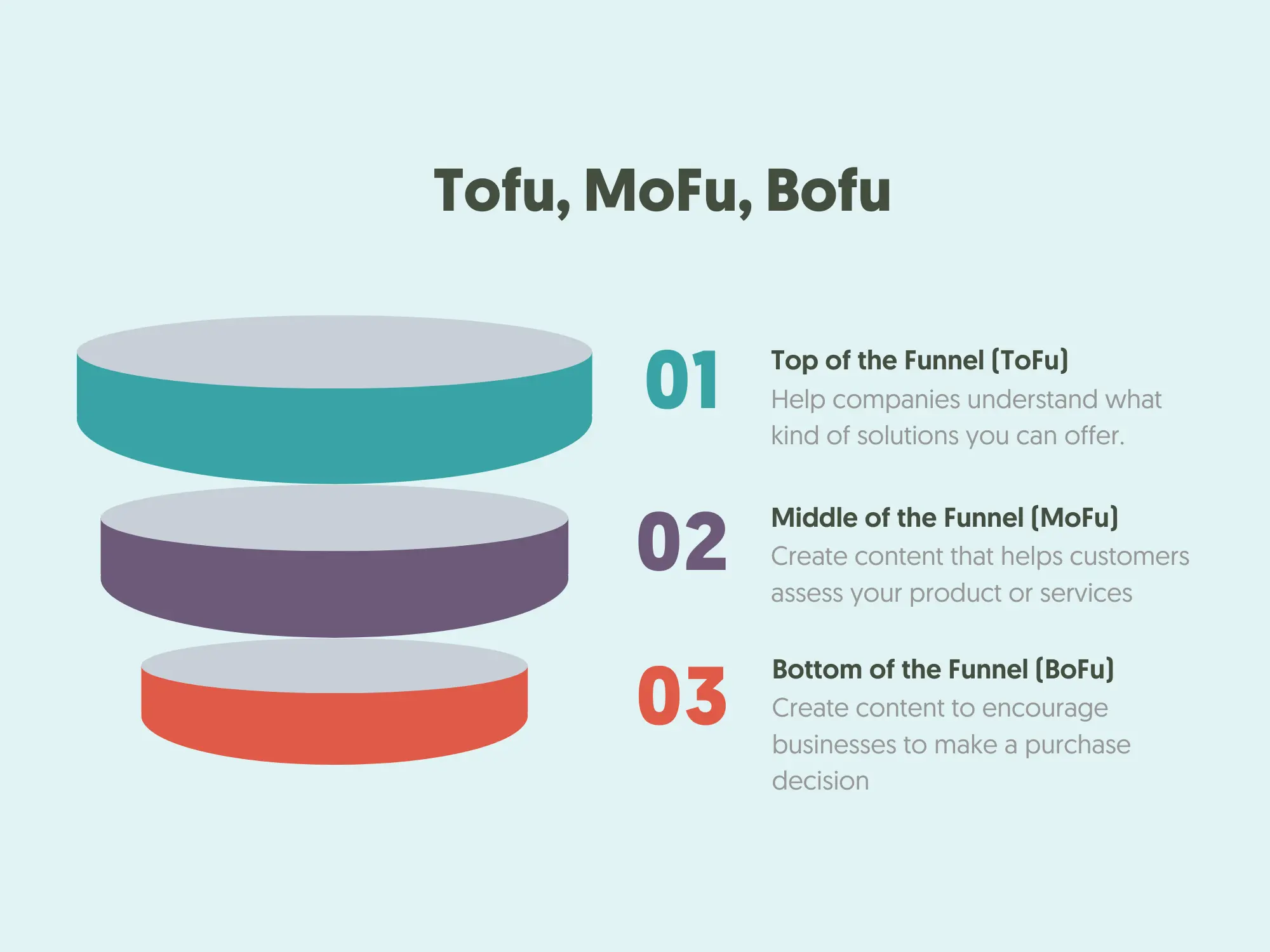
Top of the Funnel (ToFu)
The top of the funnel encompasses the “Awareness” stage of the customer journey. Content here should help companies understand the problems they’re facing and what kind of solutions they can offer.
For instance, Stripe’s guide to corporate structures doesn’t aim to sell Stripe’s services directly, but it does provide useful information to companies creating new corporate structures, helping them to see the need for a reliable payment solution.
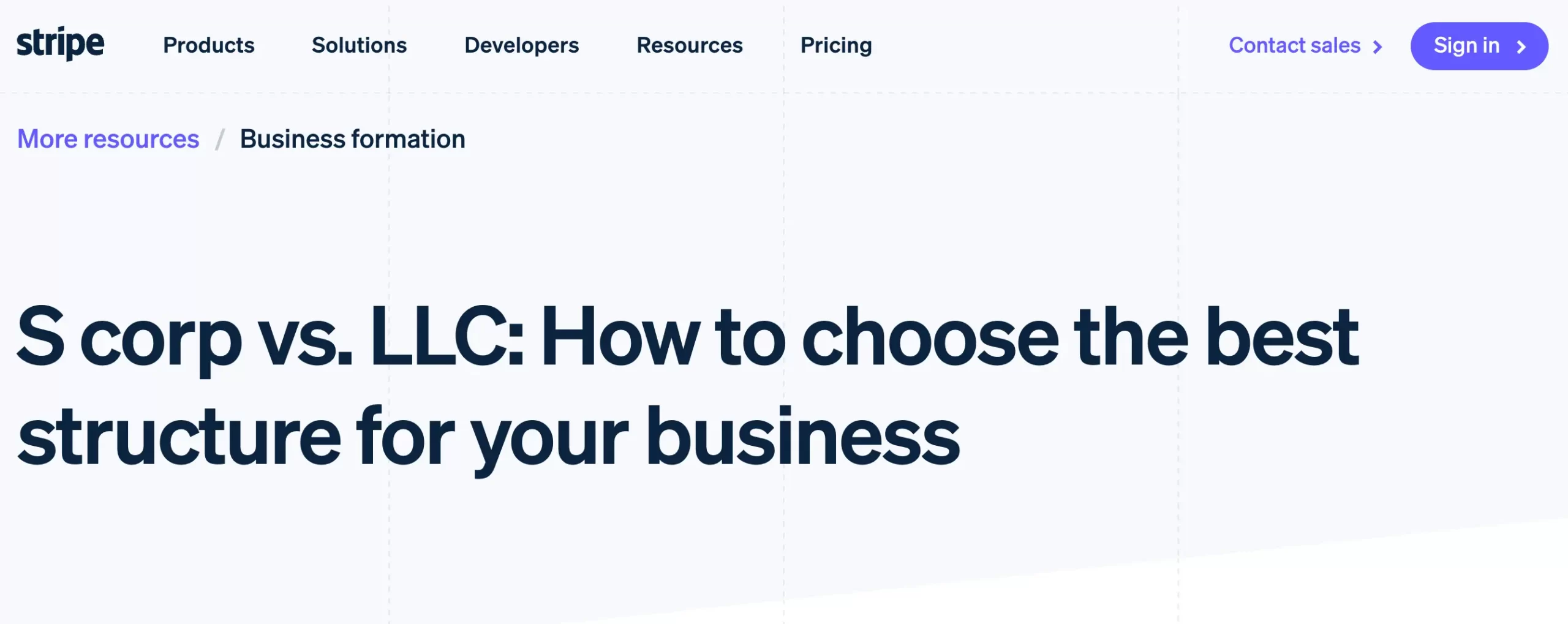
Middle of the Funnel (MoFu)
The middle of the funnel addresses the “discovery” and “consideration” stages of the buyer journey.
At this point, customers are aware of an issue they’re facing and looking for solutions.
At this stage, you can create content that helps customers assess your product or services, such as comparison guides and educational whitepapers.
The key is to design content that encourages your customers to reach out to you or make a purchase.
For instance, Ahrefs creates blogs teaching consumers how to become better at SEO and marketing, referencing its software’s features.
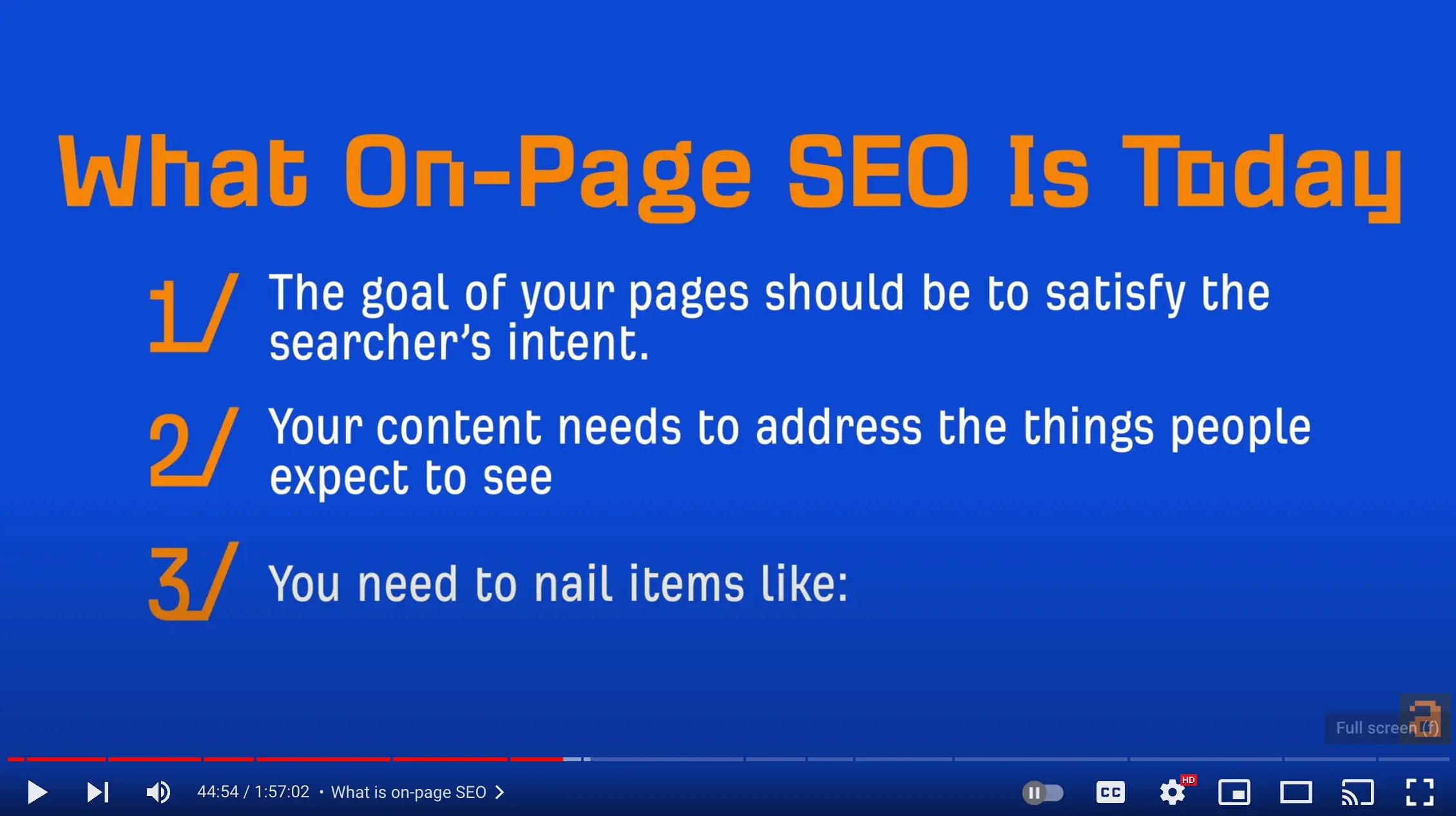
Bottom of the Funnel (BoFu)
Bottom-of-the-funnel content is all about propelling conversions. According to a Semrush survey, the most effective content at this stage often includes social proof, such as customer reviews, case studies, and success stories.
You can also create product overviews or comparisons showcasing the different solutions you offer to help consumers make a purchasing decision.
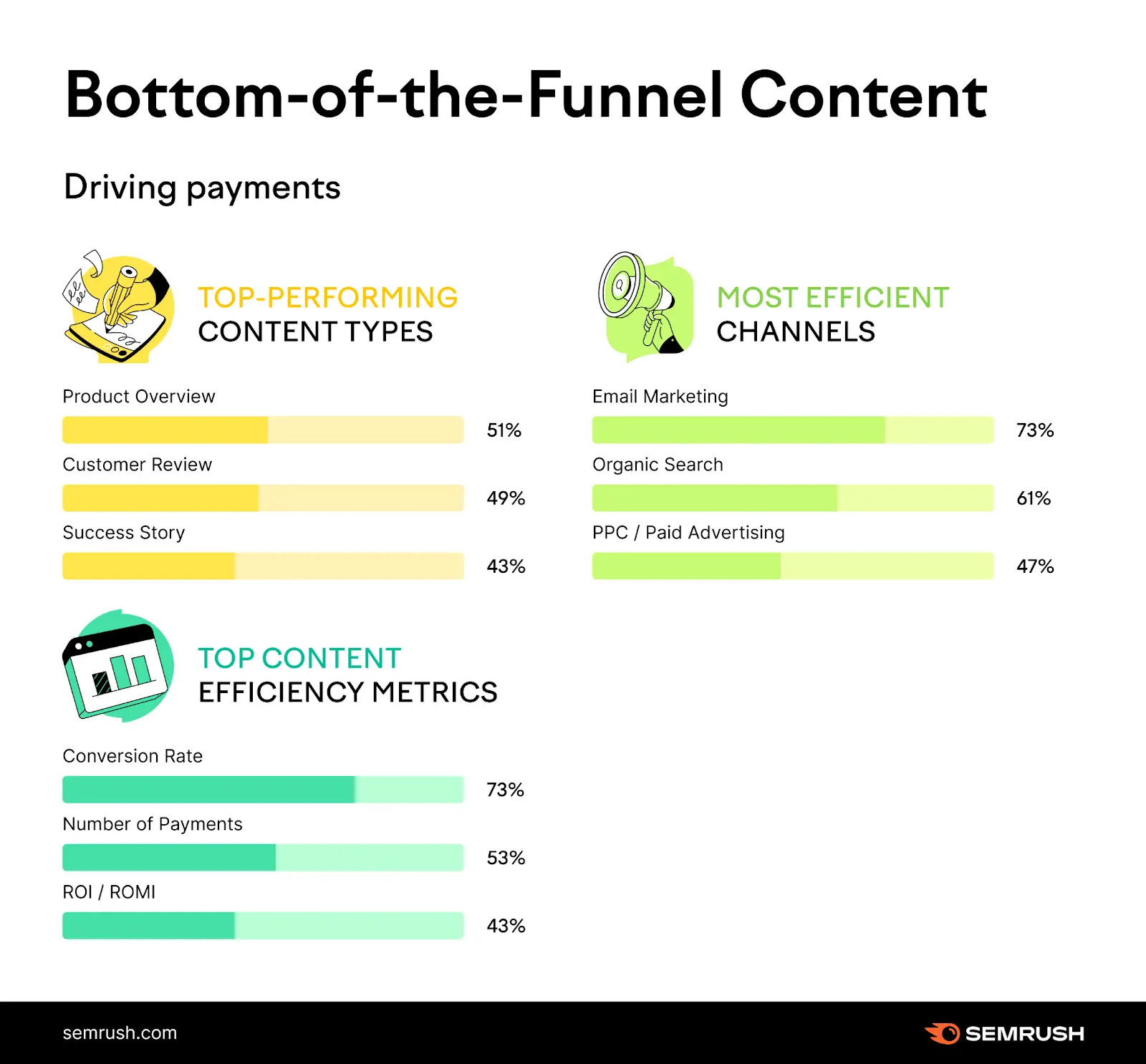
The bottom of the funnel may also encompass post-purchase customer success content.
Valuable educational content that shows consumers how to use your solution effectively can improve your chances of developing long-lasting relationships with loyal customers.
5. Perform Industry Studies
While B2B decision makers can sometimes be driven by emotion, the majority make purchasing choices based heavily on logic.
This means they constantly search for clear evidence of your company’s authority and value.
Conducting your own industry studies can elevate your B2B content marketing efforts in various ways.
First, B2B buyers are constantly looking for informative, educational content that can help them drive better ROI for their organization.
An industry study can deliver genuine value to your customers by giving them the insights they need to facilitate growth. Studies also demonstrate your thought leadership.
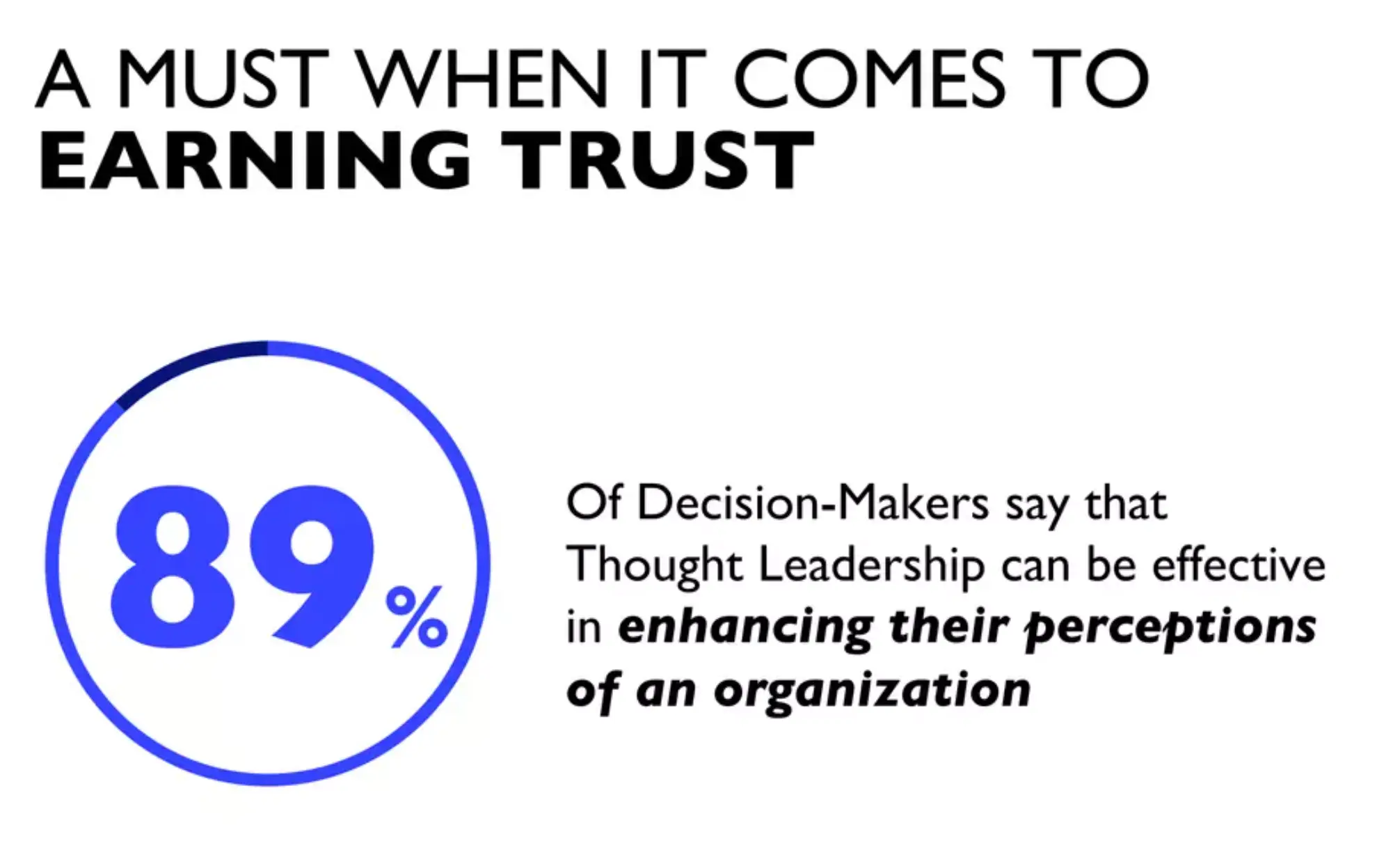
Around 90% of C-level decision-makers believe authoritative thought-leadership content influences their opinions of a company.
With proprietary studies, you can demonstrate a clear knowledge of your niche or industry with legitimate data and statistics.
Studies are also excellent for capturing contact details. A behind-the-scenes report can offer tremendous value to a company.
Brands like HubSpot publish annual reports, which consumers can download for free in exchange for their contact details.
This allows HubSpot to capture information they can use to nurture consumers over time with email marketing campaigns.
6. Aim To Rank For Commercial Keywords
SEO (Search Engine Optimization) is essential for capturing customer attention throughout the purchasing funnel.
The majority of B2B buyers are already looking for informative content online through search engines like Google. Creating content optimized around the specific terms your audiences are searching for boosts your chances of driving consistent traffic to your website.
However, it’s important to ensure you’re focusing on the right keywords. Generic terms might be common in the B2C landscape, but B2B consumers often use more specific phrases.
Long-tail phrases like “SMB accounting software” will draw more valuable attention than simple terms like “accounting”.
To make the most of your campaigns, it’s also essential to think about “intent”.
For B2B content marketing, your focus should be on high-value, low-competition terms that resonate with “commercial” intent.
For instance, terms that include phrases like “Buy” or “Deal” are often valuable. You can use tools like Ahrefs and SEMRush to evaluate the “intent” of specific phrases, combining informational and commercial intent throughout the purchasing cycle.
7. Explore Various Content Formats
Written content remains one of the most popular choices for B2B marketers. Articles, case studies, and blogs offer fantastic opportunities to demonstrate thought leadership and improve your search engine rankings.
However, experimenting with a wide range of different content types will give you more opportunities to engage people with varying needs and preferences.
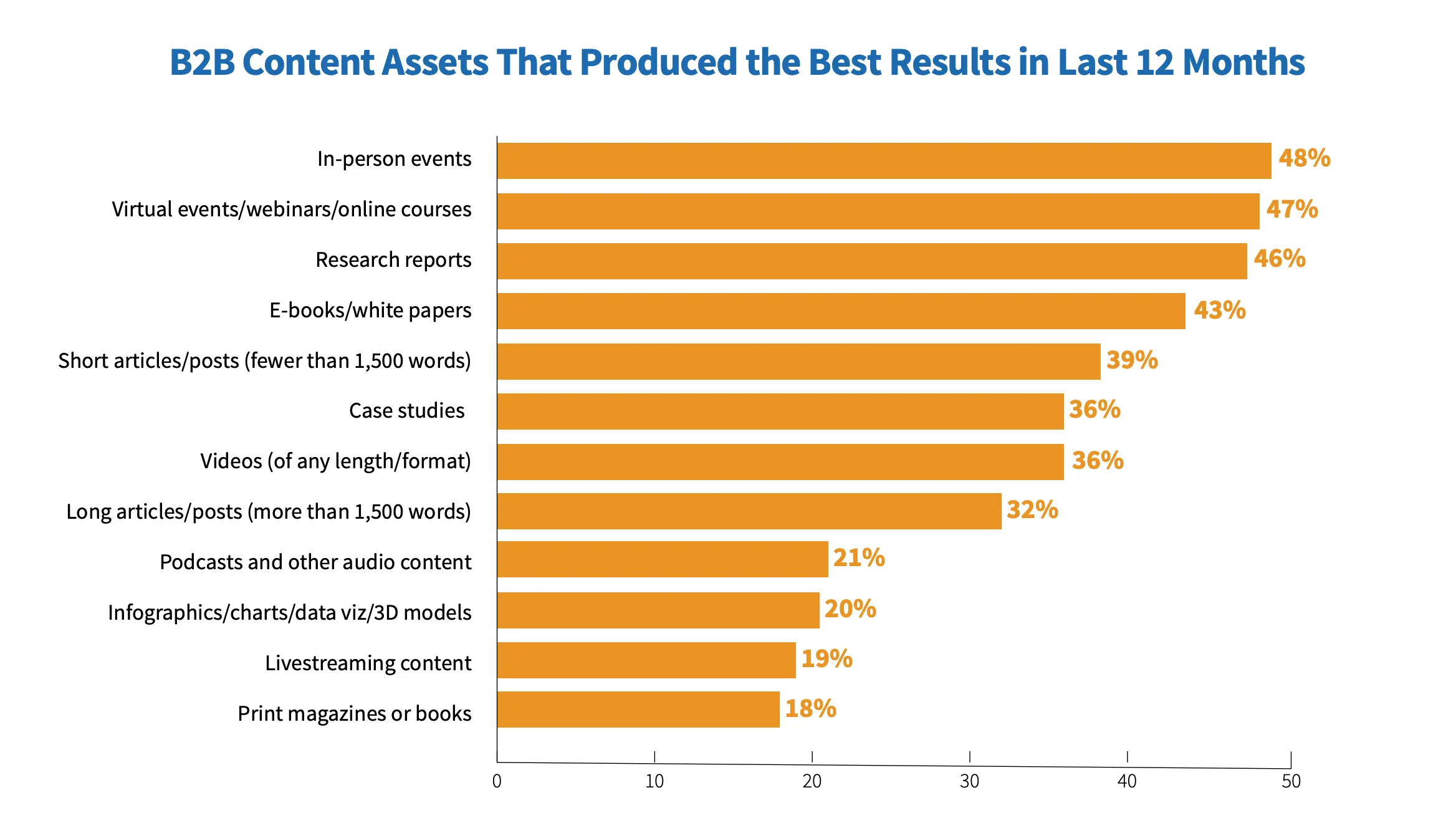
Working with a range of content formats will also open the door to new distribution channels and greater reach.
For instance, you can experiment with:
Long-form articles: Long-form articles that go in-depth into a specific topic are excellent for generating thought leadership. You can include studies, statistics, and even quotes from market leaders in these posts.
Videos: Video allows consumers to consume large amounts of information in a relatively short period of time.
Podcasts: Long-form audio recordings distributed on channels like Spotify and Apple Podcasts allow you to cover topics in a conversational and engaging way. Podcasts are popular among professionals because they’re easy to consume on the go.
Webinars: Webinars and educational content are excellent for collecting contact details, and fantastic for engaging consumers. They also offer an opportunity to retain the loyalty of existing customers.
You can start by experimenting with simpler formats, to help you cost-effectively test and develop concepts. For instance, instead of jumping straight into hosting a webinar on marketing funnels, write a LinkedIn post and host a poll to gauge interest.
8. Use Paid Ads to Reach The Right Audience
While much of the attention you earn from your B2B content marketing efforts will stem from organic content, paid advertising can give your campaigns a valuable boost. Paid ads are exceptionally good at attracting attention from highly targeted audiences.
With pay-per-click advertising, you can directly push your content towards new audiences through advertising platforms and search engines. Google Ads are effective at connecting with customers through search engines. You can target specific customers based on their location, purchasing intent, and other factors.
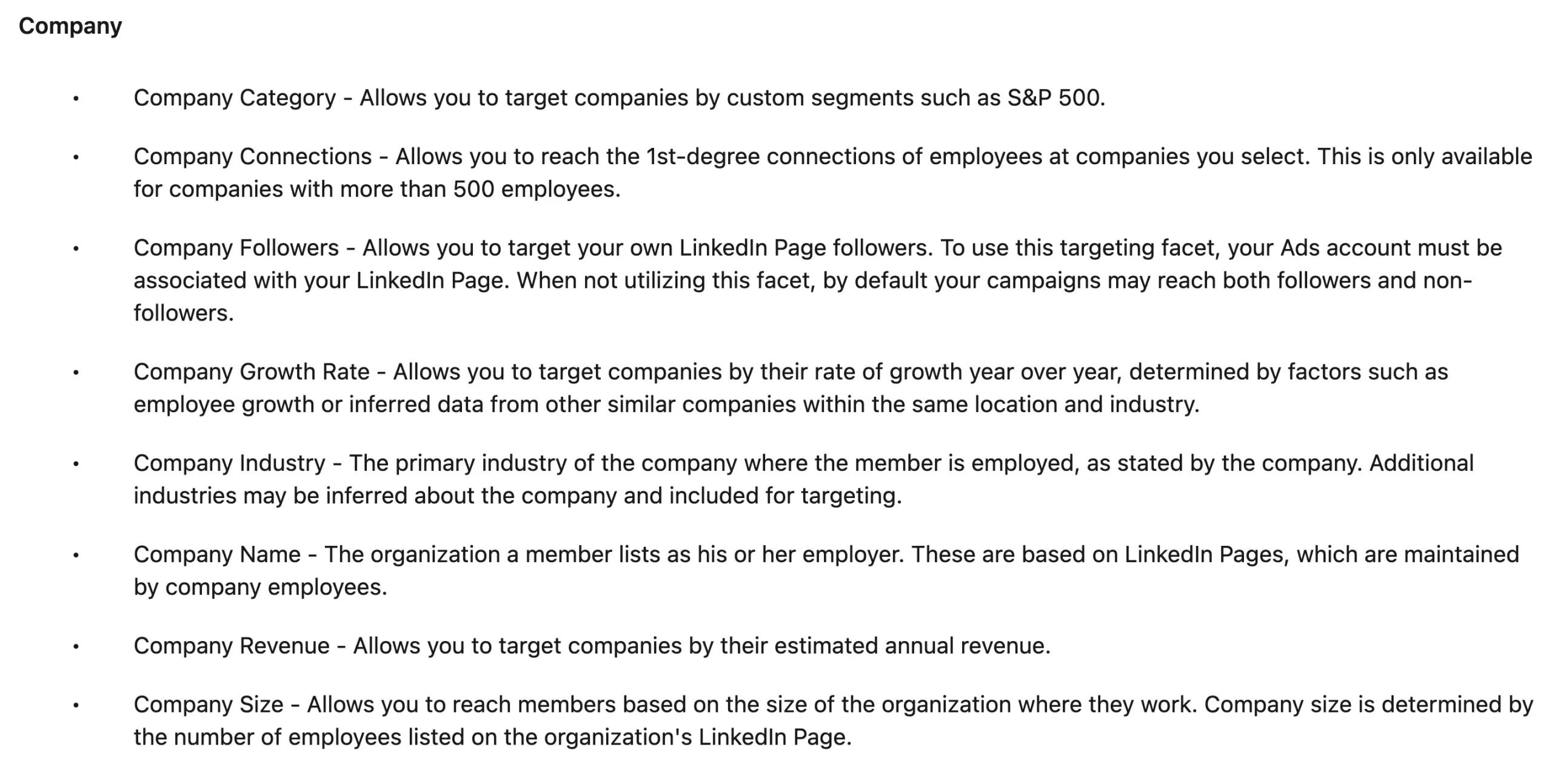
LinkedIn ads allow you to expand your reach and connect directly with other B2B brands in your niche. Remember, when leveraging PPC ads:
- Incorporate your buyer persona data so you can target highly specific niche audiences with every ad campaign.
- Promote a range of different types of content. Don’t just draw attention to your products or services, help customers to see your reports and case studies too.
- Be specific with your targeting details. Use the tools available from Google and LinkedIn to focus on customers based on their location or business size.
Remember to monitor the results of your PPC campaigns closely. You can experiment with different content, CTAs, and marketing copy using A/B testing, to maximize your ROI.
9. Use Email Marketing To Keep Your Audience Engaged
B2B marketing relies heavily on your ability to build long-lasting positive relationships with consumers.
Emails offer an opportunity to nurture your audience throughout their purchasing journey and keep them engaged.
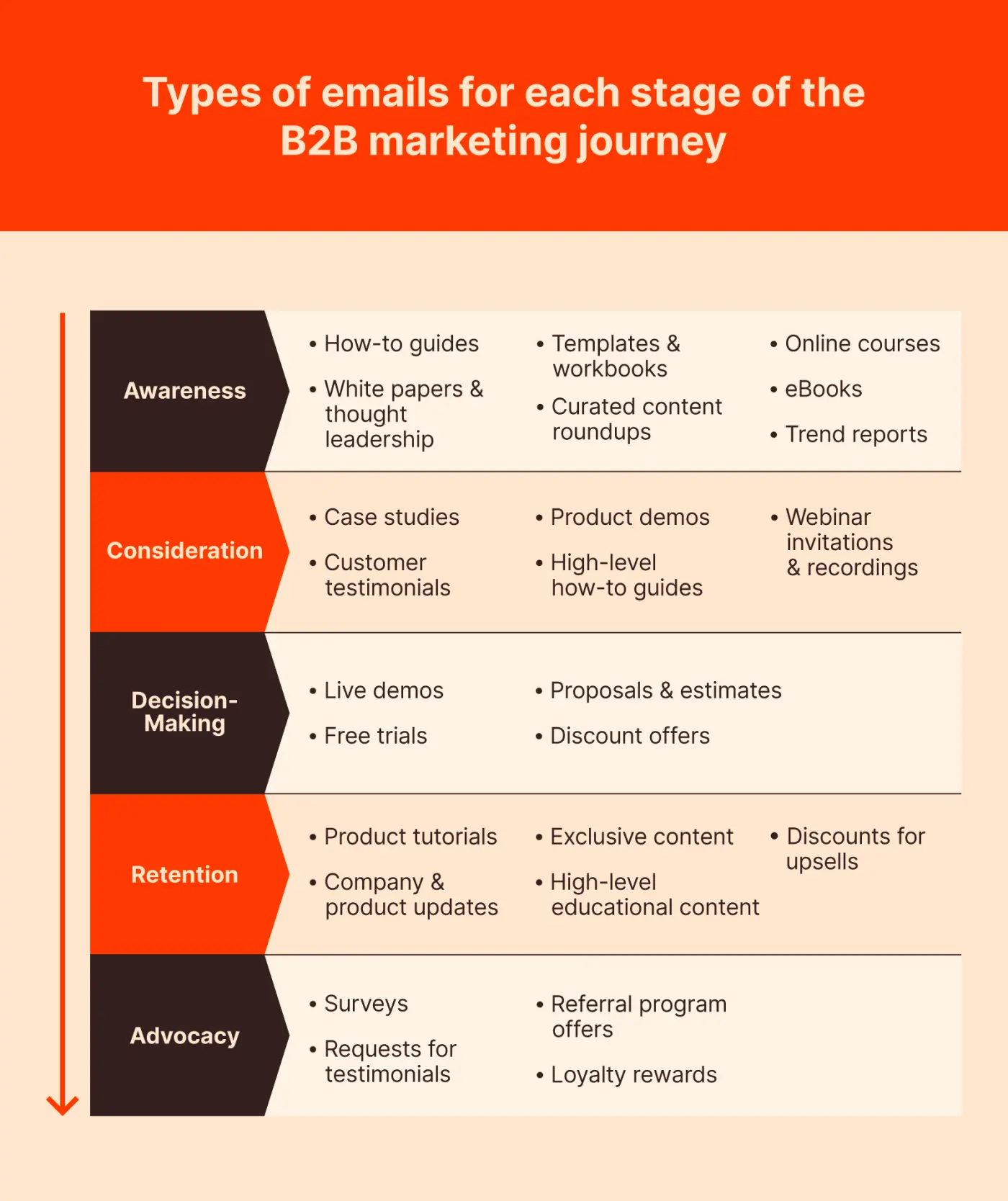
With the right email campaigns, you can connect with new customers, showcasing products and services that may be relevant to their needs. You can also increase your brand reputation with links to blogs and case studies, showcase customer reviews, and even turn existing customers into brand ambassadors.
When developing your B2B email marketing campaigns:
- Master subject lines: Engaging subject lines are crucial to convincing customers to click on your messages. Focus on hooking your audience with value-driven subject lines or questions that peak curiosity.
- Use one CTA per email: Stick to a single CTA for every email. Don’t overwhelm your customers with too many options. Make it easy for them to understand what you want them to do next (such as visit a product page).
- Use segmentation: Leverage the segmentation tools in your email marketing platform to create more personalized emails for each group in your audience. You can segment based on job title, business size, location, and product interests.
Make sure all of your email designs are responsive too. On-the-go professionals will often check their inbox on the move.
10. Build Niche Authority
Finally, establishing authority is crucial in B2B content marketing for several reasons.
First, it’s crucial to ensure your website can rank on the search engines. Google’s EEAT guidelines encourage businesses to produce content rich in expertise, authority, experience, and trust.
Secondly, authority is crucial to positioning your business as a credible source of value and information for your target audience. As mentioned above, B2B buyers want to build long-term relationships with businesses to help them overcome their challenges and achieve specific goals.
There are various ways you can build niche authority. One option is to get members of your C-Suite to share their subject matter expertise through industry-specific blogs and articles.
Don’t just share the same information as everyone else. Include proprietary data, anecdotes, and authentic stories from your team members.
Another option is to host events and webinars where you can highlight your credibility and deliver educational information. You don’t necessarily need to plan an in-person event.
Online and hybrid events are an excellent way to distribute information to business leaders and collect valuable contact details.
Remember, when building authority, you should always be able to validate your claims and statements. Reference studies when necessary, and draw attention to the background of your writers and content producers.
B2B Content Marketing Examples
There are many excellent examples of B2B content marketing in the world today. Companies like IBM and Deloitte share fantastic industry reports and produce comprehensive blog posts and articles discussing trending topics.
Leading companies like Salesforce share tons of educational content through webinars, in-person events, and training sessions.
Two top examples of B2B content marketing success come from Zapier and HubSpot.
HubSpot uses a comprehensive content marketing strategy to share informative, valuable, and educational content with a wide audience.
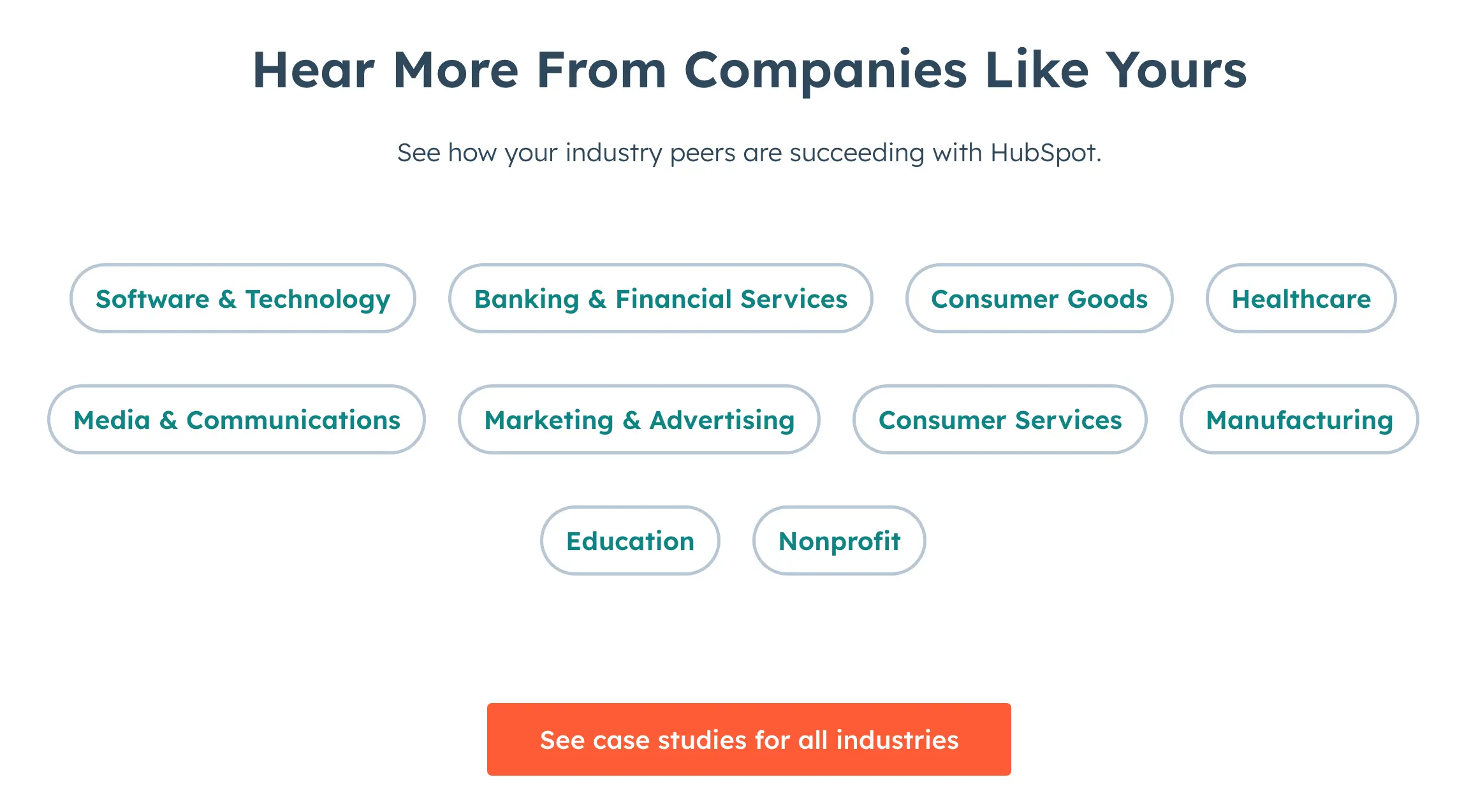
The company’s resources include podcasts featuring industry experts, videos with step-by-step guidance, blogs, and industry reports.
HubSpot also creates webinars, training courses, and events that help it engage and convert customers in specific sectors. The brand offers content focused on each part of its portfolio, covering sales, marketing, and customer service.
Zapier also offers guides, blogs, market reports, and thought leadership content focused on business leaders.
The Zapier website offers step-by-step guides on automating workflows with its tools, videos for beginners, and even comprehensive customer stories.
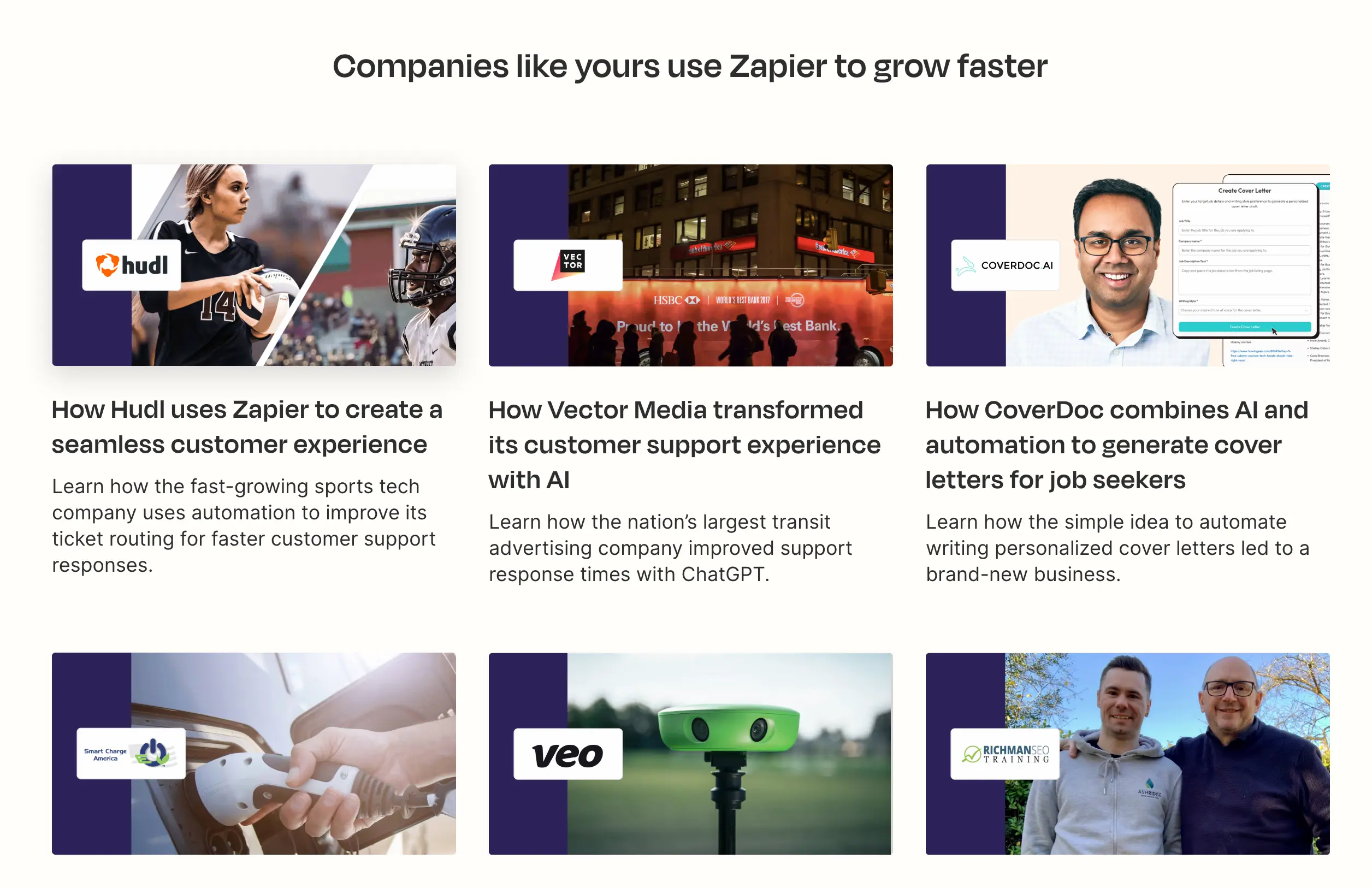
Business leaders can access tutorials, “automation inspiration” ideas, and learning resources. Plus, Zapier segments its content into different sections focused on specific consumer goals, such as productivity, business growth, and automation.
Conclusion
B2B content marketing can be tricky. Companies often struggle with budget limitations, channel and distribution decisions, and creative blocks. However, with the right strategy, any organization can unlock incredible results with content marketing.
The right content helps you capture your audience's attention, strengthen customer relationships, and elevate your brand above the competition.
